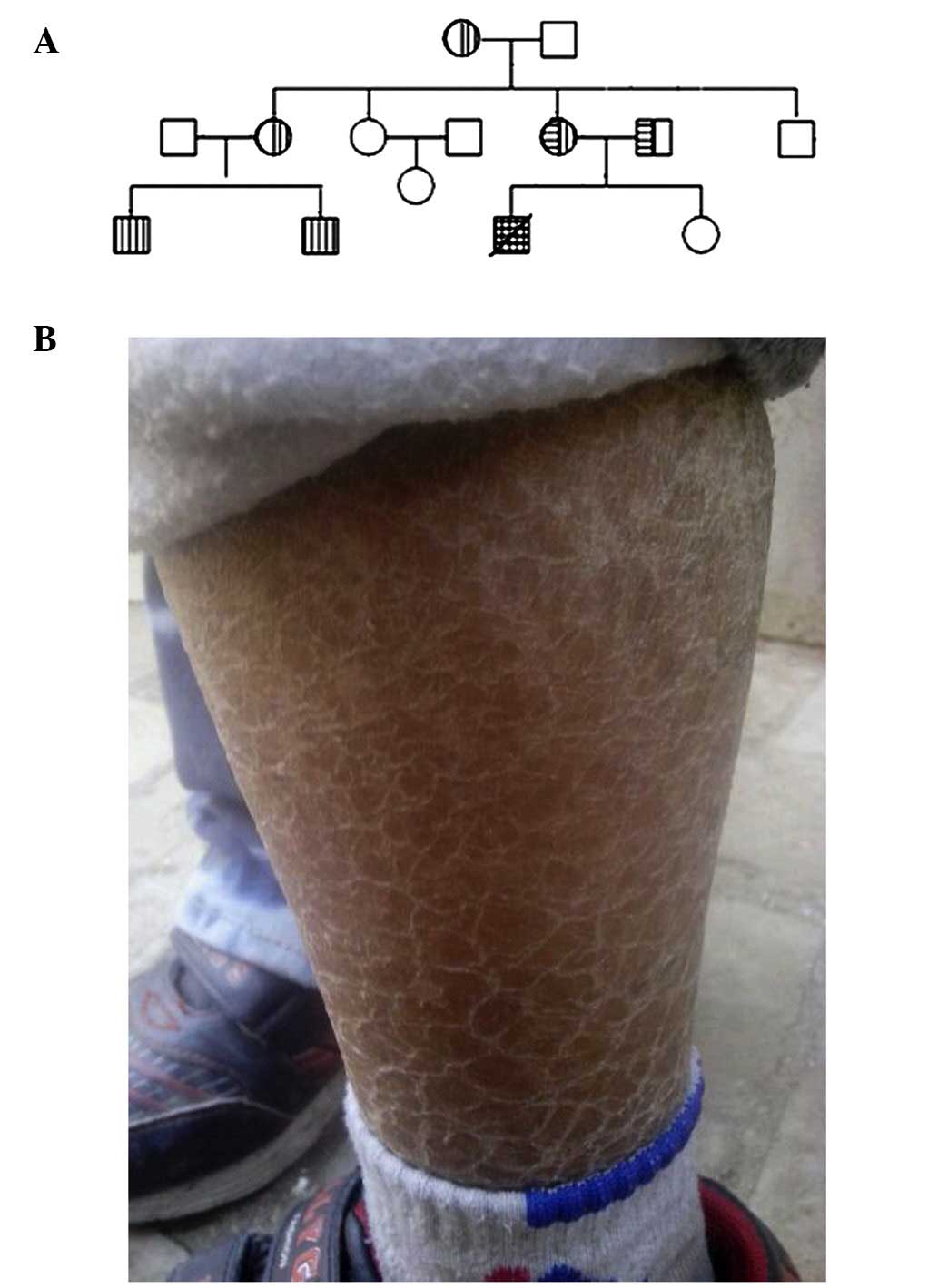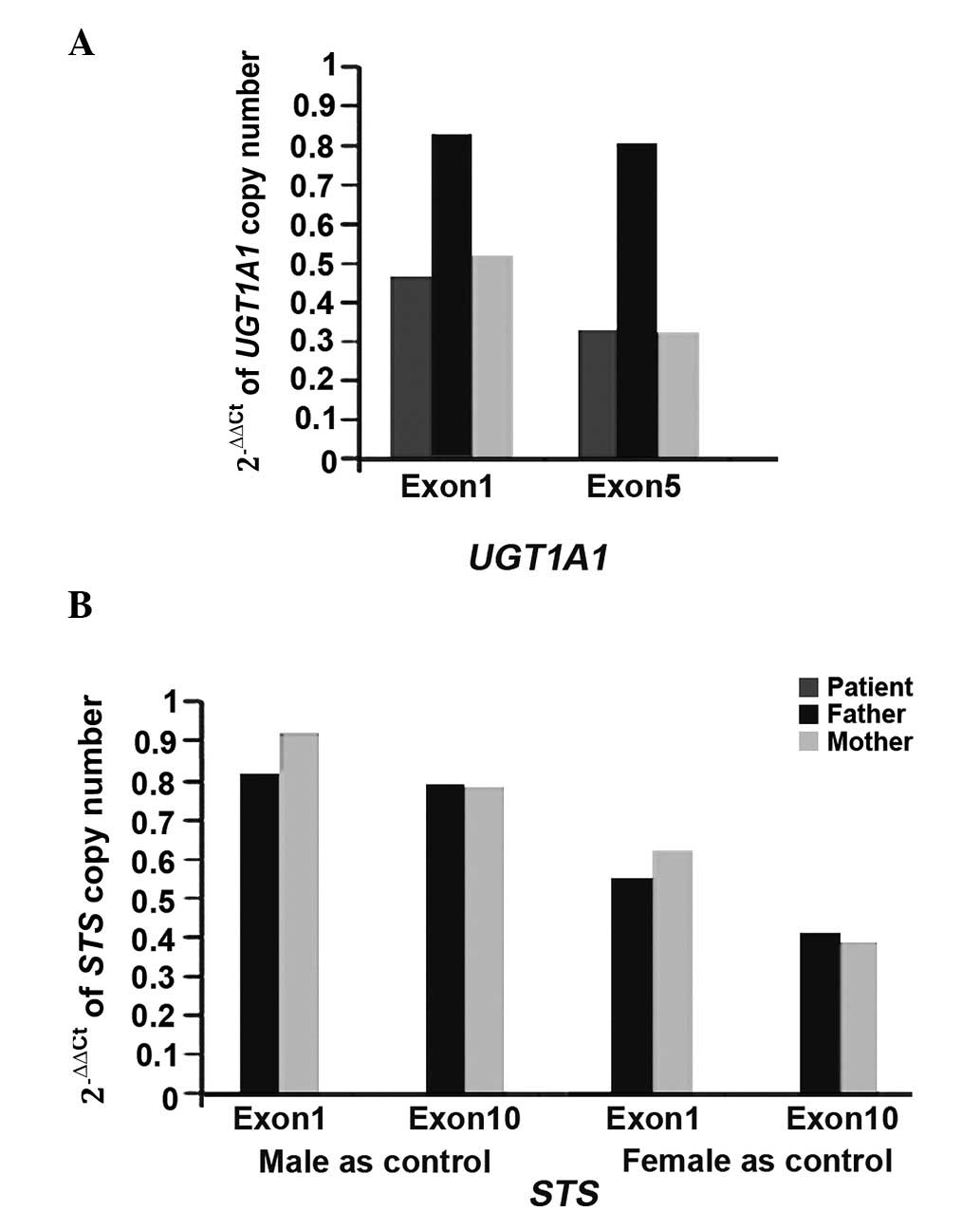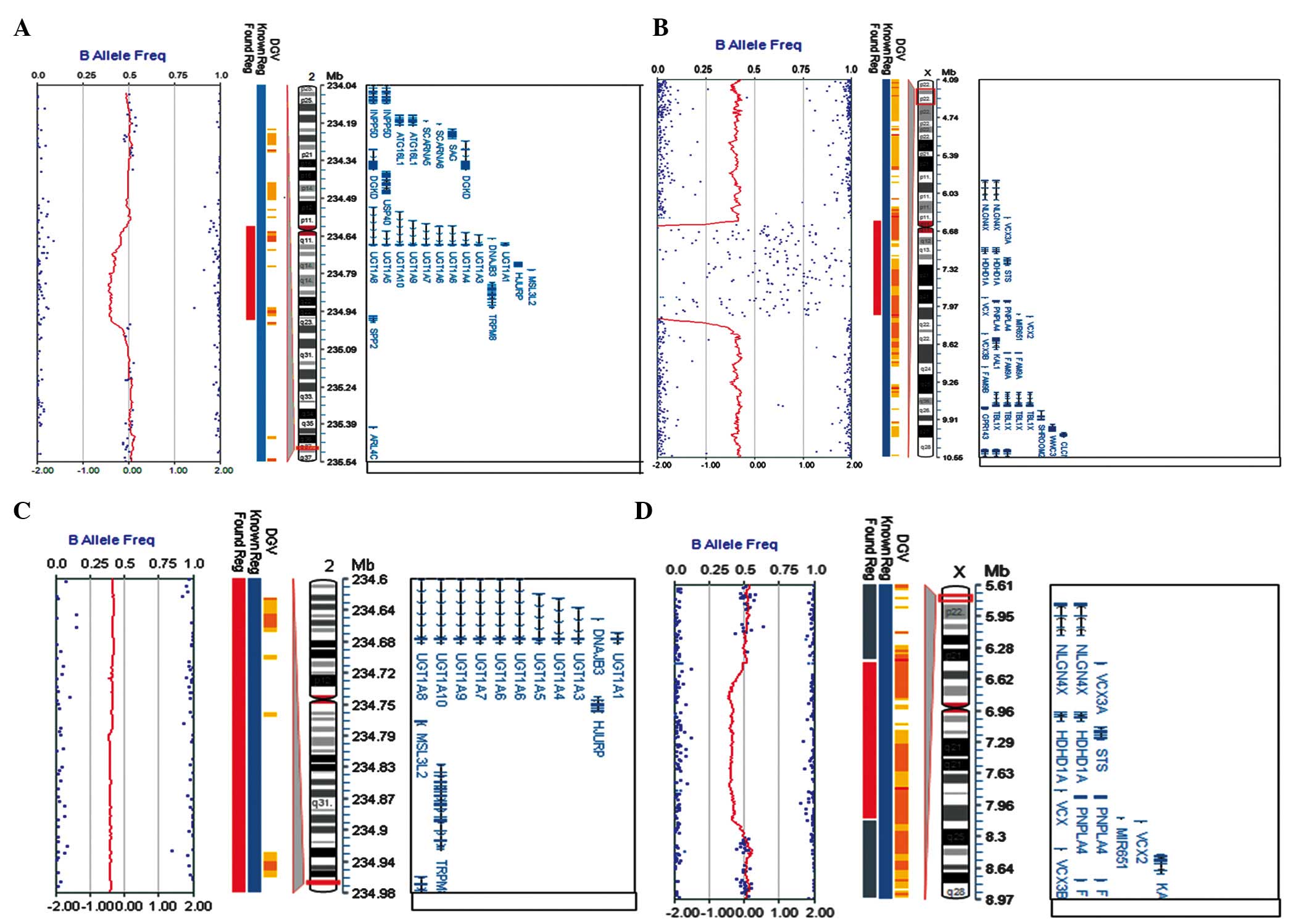|
1
|
Shapiro LJ, Weiss R, Webster D and France
JT: X-linked ichthyosis due to steroid-sulphatase deficiency.
Lancet. 14:70–72. 1978. View Article : Google Scholar
|
|
2
|
Hosomi N, Oiso N, Fukai K, Hanada K,
Fujita H and Ishii M: Deletion of distal promoter of VCXA in a
patient with X-linked ichthyosis associated with borderline mental
retardation. J Dermatol Sci. 45:31–36. 2007. View Article : Google Scholar
|
|
3
|
Traupe H and Ropers HH: Cryptorchidism and
hypogenitalism in X-linked recessive ichthyosis vulgaris. Hum
Genet. 60(206)1982. View Article : Google Scholar : PubMed/NCBI
|
|
4
|
Tiepolo L, Zuffardi O, Fraccaro M, di
Natale D, Gargantini L, Müller CR and Ropers HH: Assignment by
deletion mapping of the steroid sulfatase X-linked ichthyosis locus
to Xp223. Hum Genet. 54:205–206. 1980. View Article : Google Scholar : PubMed/NCBI
|
|
5
|
Yen PH, Allen E, Marsh B, Mohandas T, Wang
N, Taggart RT and Shapiro LJ: Cloning and expression of steroid
sulfatase cDNA and the frequent occurrence of deletions in STS
deficiency: Implications for X-Y interchange. Cell. 49:443–454.
1987. View Article : Google Scholar : PubMed/NCBI
|
|
6
|
Bonifas JM, Morley BJ, Oakey RE, Kan YW
and Epstein EH Jr: Cloning of a cDNA for steroid sulfatase:
Frequent occurrence of gene deletions in patients with recessive X
chromosome-linked ichthyosis. Proc Natl Acad Sci USA. 84:9248–9251.
1987. View Article : Google Scholar : PubMed/NCBI
|
|
7
|
Crigler JF Jr and Najjar VA: Congenital
familial nonhemolytic jaundice with kernicterus. Pediatrics.
10:169–180. 1952.PubMed/NCBI
|
|
8
|
Petit FM, Gajdos V, Francoual J, Capel L,
Parisot F, Poüs C and Labrune P: Allelic heterogeneity of
Crigler-Najjar type I syndrome: A study of 24 cases. Clin Genet.
66:571–572. 2004. View Article : Google Scholar : PubMed/NCBI
|
|
9
|
Van der Veere CN, Sinaasappel M, McDonagh
AF, Rosenthal P, Labrune P, Odièvre M, Fevery J, Otte JB, McClean
P, Bürk G, et al: Current therapy for Crigler-Najjar syndrome type
1: Report of a world registry. Hepatology. 24:311–315. 1996.
View Article : Google Scholar : PubMed/NCBI
|
|
10
|
Santos EM, Paula JF, Motta PM, Heinemann
MB, Leite RC, Haddad JP, Del Puerto HL and Reis JK: Comparison of
three methods of DNA extraction from peripheral blood mononuclear
cells and lung fragments of equines. Genet Mol Res. 9:1591–1598.
2010. View Article : Google Scholar : PubMed/NCBI
|
|
11
|
Wilke K, Duman B and Horst J: Diagnosis of
haploidy and triploidy based on measurement of gene copy number by
real-time PCR. Hum Mutat. 16:431–436. 2000. View Article : Google Scholar : PubMed/NCBI
|
|
12
|
Li Y, Qu YJ, Zhong XM, Cao YY, Jin LM, Bai
JL, Ma X, Jin YW, Wang H, Zhang YL and Song F: Two unrelated
patients with rare Crigler-Najjar syndrome type I: Two novel
mutations and a patient with loss of heterozygosity of UGT1A1 gene.
J Zhejiang Univ Sci B. 15:474–481. 2014. View Article : Google Scholar : PubMed/NCBI
|
|
13
|
Murtaza G, Siddiq S, Khan S, Hussain S and
Naeem M: Molecular study of X-linked ichthyosis: Report of a novel
2-bp insertion mutation in the STS and a very rare case of
homozygous female patient. J Dermatol Sci. 74:165–167. 2014.
View Article : Google Scholar : PubMed/NCBI
|
|
14
|
Fukami M, Kirsch S, Schiller S, Richter A,
Benes V, Franco B, Muroya K, Rao E, Merker S, Niesler B, et al: A
member of a gene family on Xp22.3, VCX-A, is deleted in patients
with X-linked nonspecific mental retardation. Am J Hum Genet.
67:563–573. 2000. View
Article : Google Scholar : PubMed/NCBI
|
|
15
|
Paige DG, Emilion GG, Bouloux PM and
Harper JI: A clinical and genetic study of X-linked recessive
ichthyosis and contiguous gene defects. Br J Dermatol. 131:622–629.
1994. View Article : Google Scholar : PubMed/NCBI
|
|
16
|
Van Steensel MA, Vreeburg M, Engelen J,
Ghesquiere S, Stegmann AP, Herbergs J, van Lent J, Smeets B and
Vles JH: Contiguous gene syndrome due to a maternally inherited
8.41 Mb distal deletion of chromosome band Xp22.3 in a boy with
short stature, ichthyosis, epilepsy, mental retardation, cerebral
cortical heterotopias and Dandy-Walker malformation. Am J Med Genet
A. 146:2944–2949. 2008. View Article : Google Scholar
|
|
17
|
Gohlke BC, Haug K, Fukami M, Friedl W,
Noeker M, Rappold GA and Haverkamp F: Interstitial deletion in
Xp22.3 is associated with X linked ichthyosis, mental retardation
and epilepsy. J Med Genet. 37:600–602. 2000. View Article : Google Scholar : PubMed/NCBI
|
|
18
|
Lahn BT and Page DC: A human
sex-chromosomal gene family expressed in male germ cells and
encoding variably charged proteins. Hum Mol Genet. 22:311–319.
2000. View Article : Google Scholar
|
|
19
|
Canu G, Minucci A, Zuppi C and Capoluongo
E: Gilbert and Crigler Najjar syndromes: An update of the
UDP-glucuronosyltransferase 1A1 (UGT1A1) gene mutation database.
Blood Cells Mol Dis. 50:273–280. 2013. View Article : Google Scholar : PubMed/NCBI
|
|
20
|
Zhang F, Gu W, Hurles ME and Lupski JR:
Copy number variation in human health, disease and evolution. Annu
Rev Genomics Hum Genet. 10:451–481. 2009. View Article : Google Scholar
|
|
21
|
Miller DT, Adam MP, Aradhya S, Biesecker
LG, Brothman AR, Carter NP, Church DM, Crolla JA, Eichler EE,
Epstein CJ, et al: Consensus statement: Chromosomal microarray is a
first-tier clinical diagnostic test for individuals with
developmental disabilities or congenital anomalies. Am J Hum Genet.
14:749–764. 2010. View Article : Google Scholar
|
|
22
|
Schaaf CP, Wiszniewska J and Beaudet AL:
Copy number and SNP arrays in clinical diagnostics. Annu Rev
Genomics Hum Genet. 12:25–51. 2011. View Article : Google Scholar : PubMed/NCBI
|

















